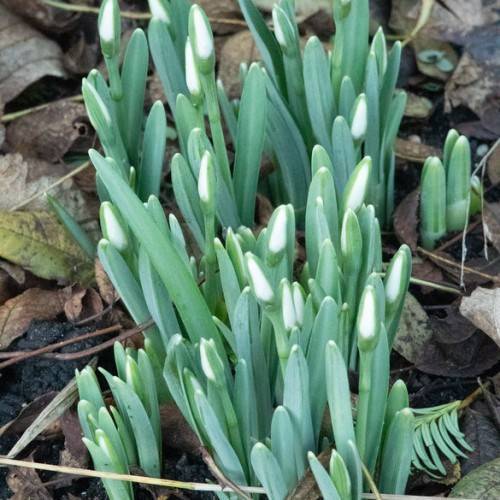
snowdrop
Galanthus nivalis 'Viridi-apice'
Cycle:
Perennial
Watering:
Average
Hardiness Zone:
3 - 7
Flowers:
Flowers
Sun:
Full sun,part shade
Leaf:
Yes
Growth Rate:
Low
Maintenance:
Low
Care Level:
Moderate
watering
Snowdrop (Galanthus nivalis 'Viridi-apice') needs moist soil to thrive, so water regularly when the top layer of soil feels dry to the touch. Water thoroughly until it slowly begins to drain from the bottom of the pot. Avoid over-watering which can lead to root rot. During the summer, water regularly and frequently so the soil stays moist. In winter, reduce watering to about once every 2 weeks. Make sure that the soil does not dry out completely, as this could damage the plants.
sunlight
Snowdrops are a species of plants that prefer sunny winter days for ideal growth. These bulbs do not need direct sunlight, as they are rather shade lovers and prefer moist soils with good drainage. For optimum growth, snowdrops should receive part to full sun in between 8 and 10 hours per day throughout the winter months. They should receive the most abundant sun hours during the late afternoon when temperatures are at their coolest. While too much direct sunlight can dry and burn the leaves, a healthy dose of sunlight is necessary in order to produce the best blooms.
pruning
Snowdrop plants (Galanthus nivalis 'Viridi-apice') should be pruned in mid-spring when the leaves have started to yellow. This will not only create a more bushier and healthier look but also help them last longer and bloom bigger. To prune snowdrops, simply clip the spent flower stems and stems with yellowing leaves just above the ground. Pruning in this way should only take a few minutes and can be done yearly or every other year. Also, if you would like to share the plants with others, you can take affected pieces and repot them in a new location. This can be done prior to pruning, or during the process.
